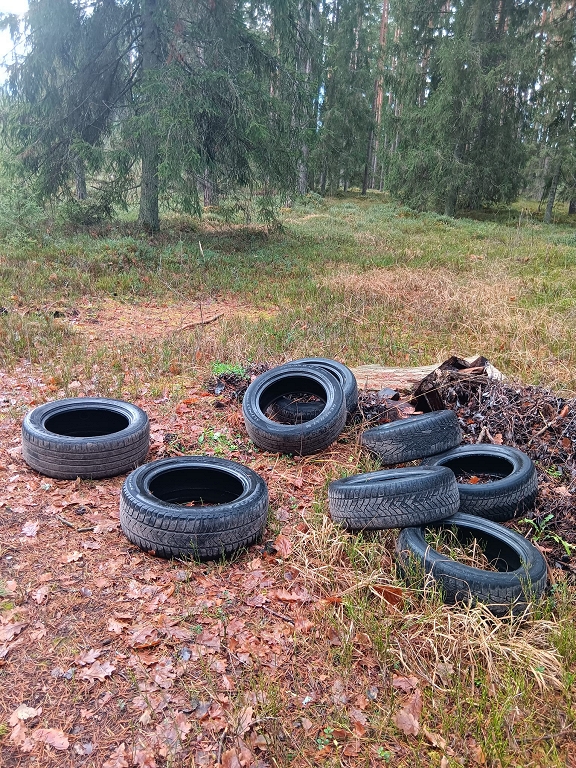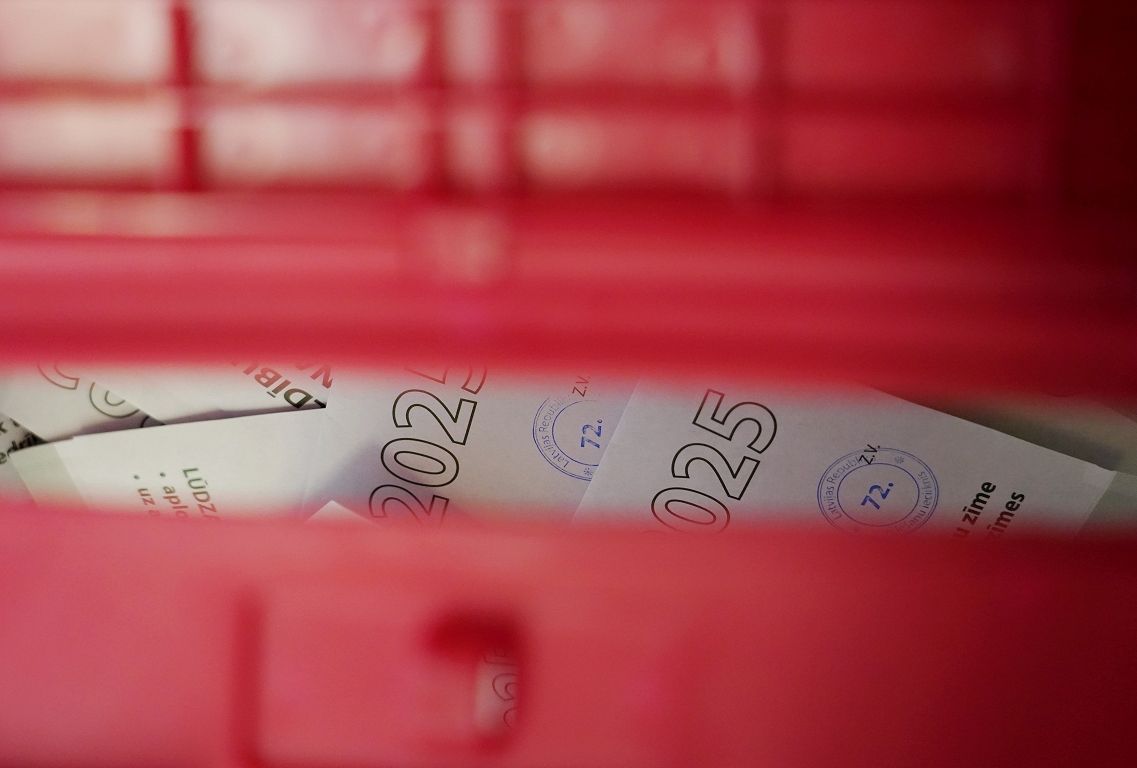Environmentally friendly tire utilization / day

Seasonal tire change is an annual need, but it is an opportunity to act environmentally friendly if necessary for wearing worn tires. The tires should not be disposed of in household waste or nature as they are hazardous waste, but old car tires are also a useful resource after processing.
The threat to the environment
« Tires are an environmentally harmful product. Uncomfortable tire management and illegally designed tire stacks create dangerous conditions for the surrounding population. All kinds of tires as waste are counted as environmentally harmful waste, » emphasizes Atis Trey, Director of the State Environmental Service. However, people try to get rid of worn tires in different ways, even trying to burn them. However, it is forbidden because combustible tires can have a significant impact on the environment: « The burning of the toxic chemicals that contaminate the air is released. These chemicals with sewage enter soil, plants and animals. People can face such plants and animals. Get a variety of harmful substances. A fine of worn -out tires can be imposed on a natural person between 70 and 1000 euros, but a legal entity from 250 to 2800 euros.
Still gets into nature
Despite various informative campaigns and educational citizens, small tires are still in nature, but large tire savings have no longer been detected and existing (historical) (historical) SES has been eliminated. « In this year Environmental SOS In the application, residents reported 155 times about the tires found in the environment, which is 20 less than last year, « concludes Atis Trey. The problem of waste, including worn -out tires in nature, is characteristic of both regions where tire collection sites are more difficult to reach. Ieva Geisters, a strategic communication and public relations specialist, says that in the three months of this year, more than six tons of tires have been collected in the territories of the Riga Forest. This amount is only paid for waste transfer. It does not include the amount of transport as well as the salaries of employees. Comparatively, in the first three months of 2024, 13 tons of tires were collected in our territories and paid 1167 euros. But tires are just one of the groups of waste that are thrown out in our Pieriga and Riga forests. We collect the most of us household, debris and bulky waste, as well as tires, biological waste and hazardous waste – slate, oil packs, etc., « says I. Geister. Mostly, tires come in the spring and autumn when the tires are changed seasonally. » In our territories, information marks against waste disposal and the forests are carried out in the forests. There are enclosing barriers to the forests. From 2021 to 2024, we implemented the #tire campaign on social networks, during which we invited people not to use the green area as a place to throw our vehicle tires. Similarly, in 2023 and 2024, Riga Forests, in cooperation with the State Environmental Service, implemented the campaign clean Riga Forests! Environmental SOS calling on the public to report to the trapped waste, « reveals a spokeswoman for the company Riga Forests.
Time to get rid of old tires
« The tire composition makes them durable but also difficult to break down, so they need special recycling. When worn tires are incorrectly disposed of or decomposed, they can release harmful substances that negatively affect the environment and human health. emphasizes SIA Green center Project manager Zhanna Lampicka.
Typically, a light car tire set serves an average of five to six years, or 40,000 to 80,000 kilometers, depending on different factors, such as tire quality – higher quality tires usually last longer. Driving style is also important – athletic driving, rapid braking and rapid acceleration reduces the life of the tires. The quality of the roads also affects the wear of tires – even with poor road surface, bumpy asphalt or gravel roads, tires wear out faster. In addition, tires also need care – regular pressure testing, rotation (changing places) and proper storage extends the lifetime of the tires. In addition, even the climate has a certain effect, as high heat or very cold weather can affect the aging of the tire material.
Importantly, even if the tires after the tread still seem « good », after six years the rubber may begin to lose elasticity and the tires will no longer be so safe. Therefore, 10 years from the date of production is considered to be the absolute maximum service life, regardless of the condition of the application.
Recycling obtains valuable materials
By giving a second life to tires, it is possible to reduce the amount of waste and create new products and at the same time prevent environmental pollution, so every driver can contribute by choosing a responsible disposal of car tires. Throughout the European Union, tire recycling has become an important environmental component, and countries have developed efficient systems to reduce tire pollution and obtain valuable materials for their reuse. « Tire collection and further recycling reduce the negative impact on the environment and provide the ability to use the resulting material recycled. The tires collected are converted into granules, which are then widely used in the production, construction or road construction of sports fields, » Tree explains.
The collected tires are delivered to recycling plants (there are several in Europe), where the tires are first cleaned of all impurities, such as lubricants, oils, mud and other dirt. This is important to obtain clean materials in the processing process, which can then be used to produce new products. At this stage, metal bars and other metal elements can also be removed, which are often used in tire construction. « Tires also contain metal wire, usually steel removed using magnetic appliances. The fabric components that are in the inner layers are separated mechanically to obtain a clean rubber material. After cleaning the tire is crushed. This process is done using special equipment, such as tire crushers. Center Project Manager. These rubber particles are further divided into different fractions by size. Fine rubber granules are used, for example, in the production of sports grounds, but larger pieces can be used in construction or road construction, while rubber powder is useful in the production of raw materials needed in other industrial sectors such as plastic or rubber production.
« Recycled tires are also useful in insulating materials – provides sound and vibration insulation in buildings. The cushioning of the playgrounds and sports grounds, which reduces the risk of injury, tops from recycled tires. Tire recycling materials result in fashion and design – some companies from recycled tires produce bags, shoes and interior.








